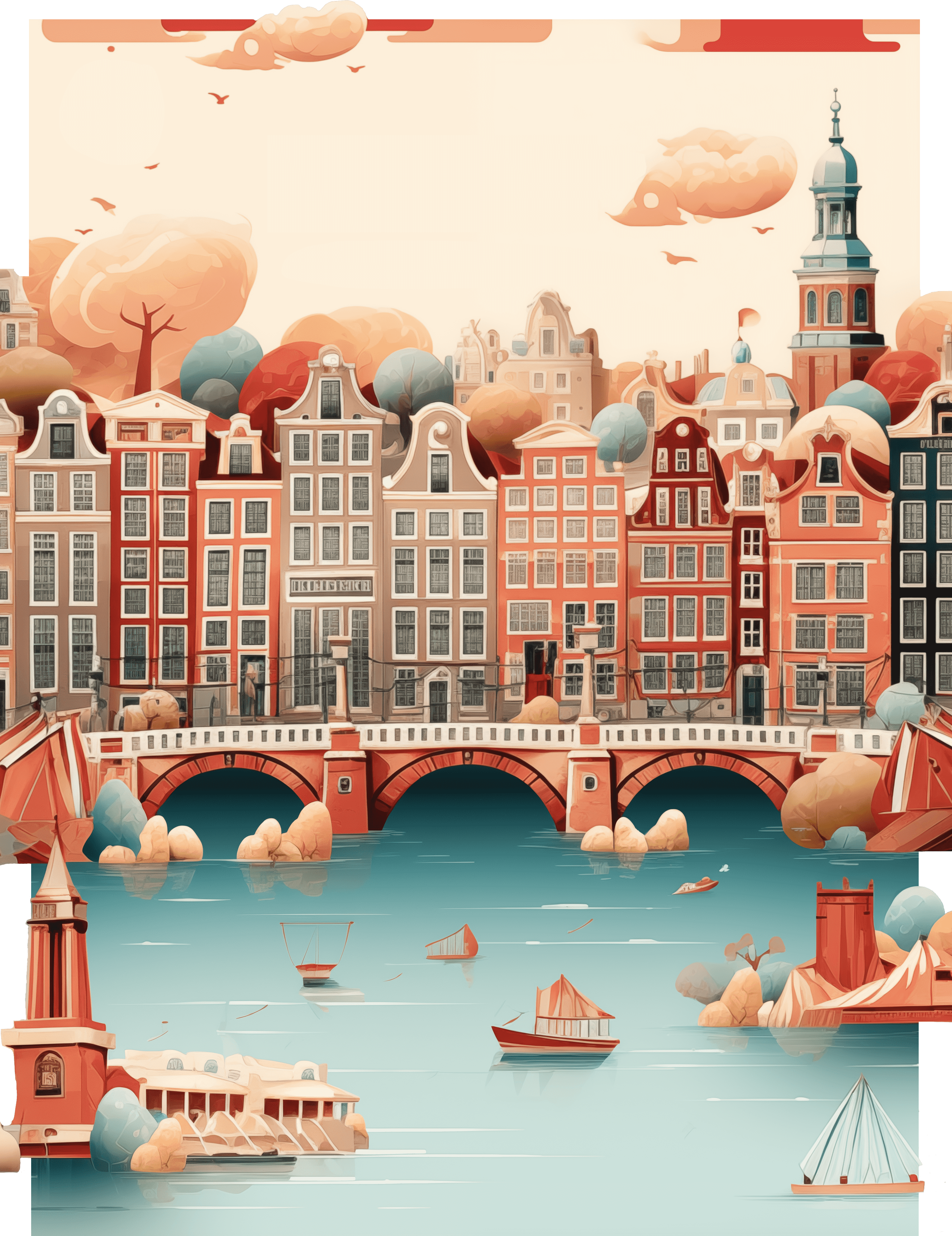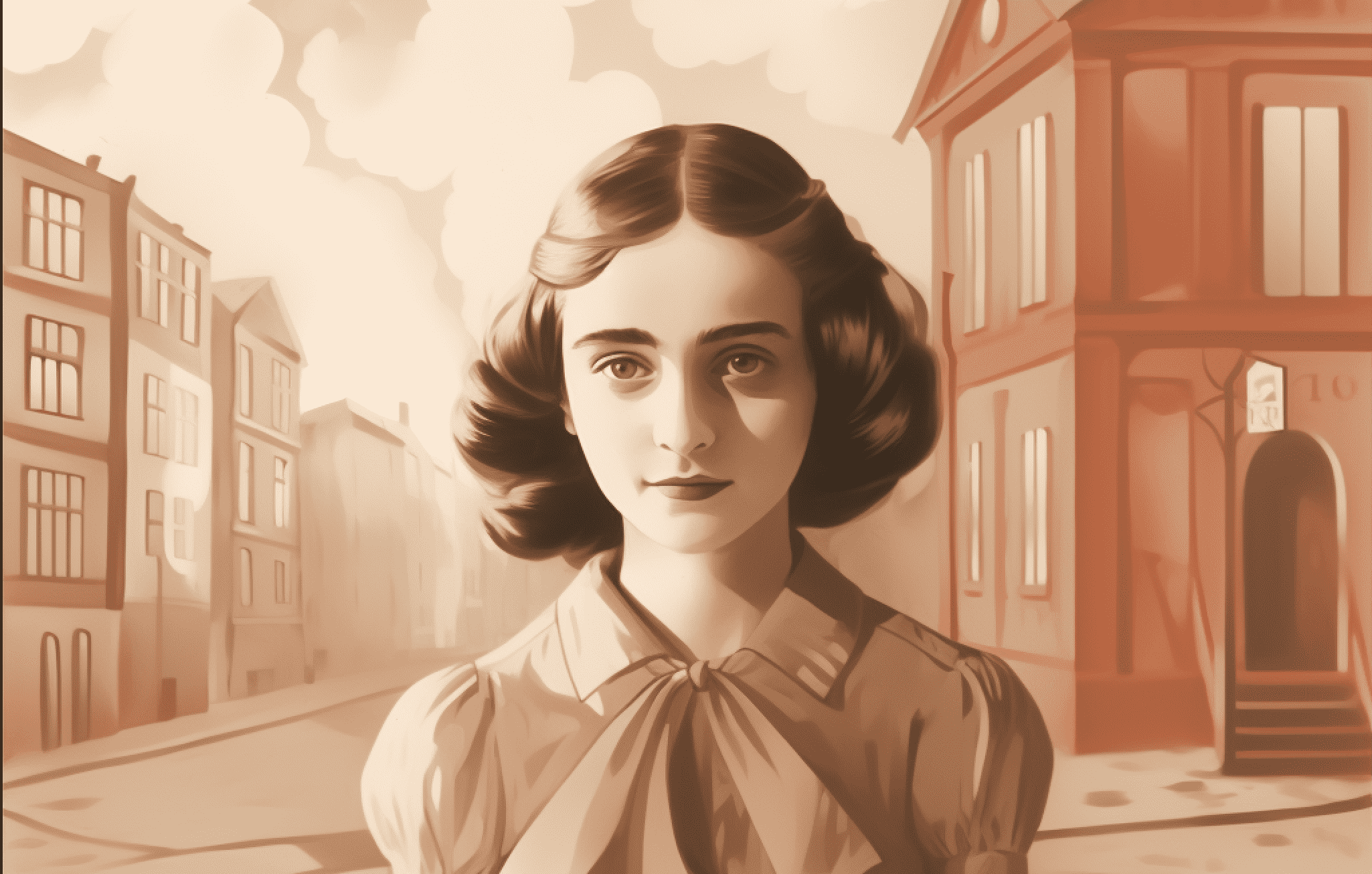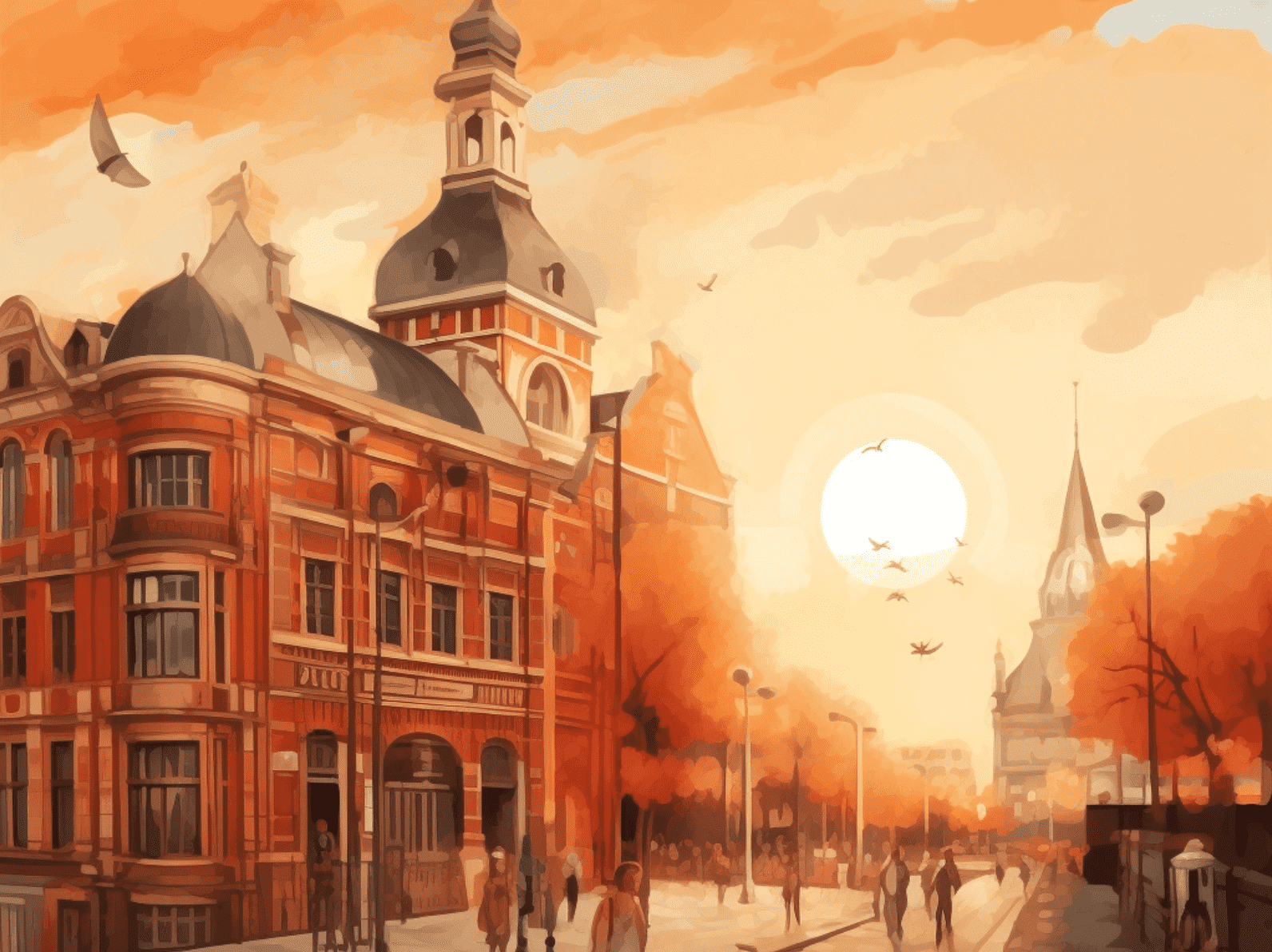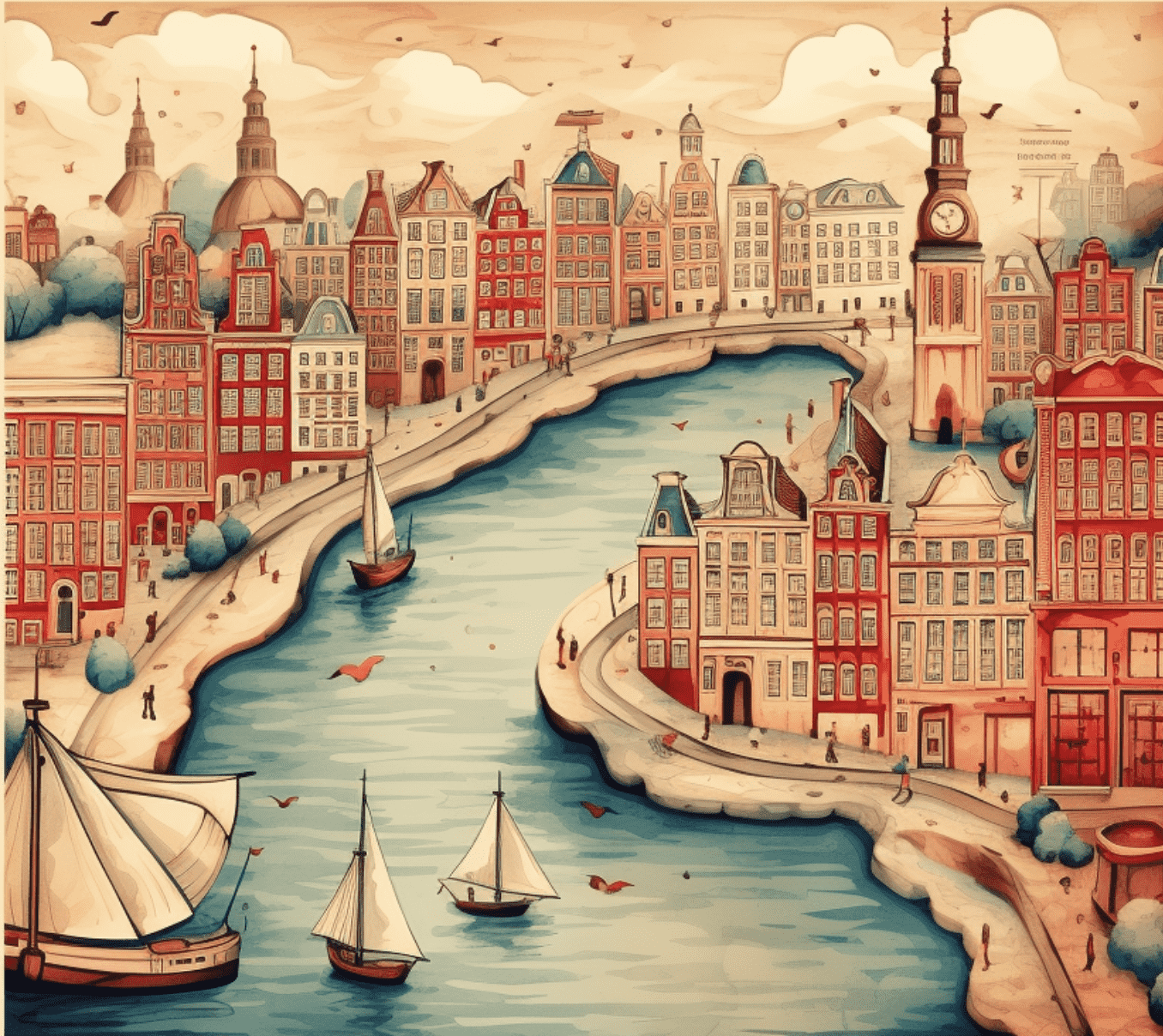

If you're looking for a city that has it all, look no further than Amsterdam. The capital of the Netherlands is a world-class destination that offers something for everyone. To help you plan your perfect trip, we've created this comprehensive guide to 17 of the most amazing attractions in Amsterdam. You'll also get access to our free audio guide, available on the App Store, which will provide you with fascinating facts and stories about each of these places. You can listen to the audio guide as you explore the city at your own pace, and use the GPS navigation feature to easily find your way around. Don't miss this opportunity to discover the best of Amsterdam!

Amsterdam Audio Tour 4+
Self-Guided Audio Walking Tour
Designed for iPhone

If you want to learn more about the history of the Holocaust and the life of one of its most famous victims, you should visit the Anne Frank House. This museum is located in the former hiding place of Anne Frank and her family, where they lived for more than two years during World War II. You can see the original diary of Anne Frank, as well as other documents, photos and objects that tell the story of her courage and hope.
If you are looking for a lively and colorful spot in Amsterdam, you should go to Muntplein & Flower Market. Muntplein is a busy square that connects several streets and tram lines. It is named after the Munttoren or Mint Tower, which was part of the medieval city wall and later used to mint coins. The tower has a carillon that plays tunes every quarter hour. You can also see the Koninklijk Paleis or Royal Palace on one side of the square. Flower Market is a floating market on the Singel canal, where you can buy all kinds of flowers, plants and bulbs. It is open every day of the week and it is especially popular during tulip season. You can find many souvenir shops, cafés and restaurants around the market as well. Muntplein & Flower Market is a place where you can enjoy the sights, sounds and smells of Amsterdam.
One of the most intriguing historical buildings in Amsterdam is the one known as "The House with the Graffiti" or "The House with The Blood Stains". Its plain facade is covered with reddish-brown symbols that look like ancient Hebrew letters. These symbols were painted by Coenraad van Beuningen, a former resident of the house and a prominent Dutch diplomat and politician. Van Beuningen was the burgomaster of Amsterdam several times, a director of the Dutch East India Company, and a friend of Spinoza. However, he suffered from mental instability and lost his fortune in 1688. He then became obsessed with Kabbalah and mysticism, and started to paint mysterious symbols on his house, allegedly using his own blood as paint.
The Stopera is a unique building that combines two functions: a city hall and an opera house. It was designed by the architects Cees Dam and Wilhelm Holzbauer and opened in 1986. The Stopera is home to the Dutch National Opera and Ballet, as well as the Amsterdam City Council. You can admire the modern architecture of the Stopera, enjoy a performance of opera or ballet, or take a guided tour of the city hall.

If you are a fan of art and history, you should not miss the Rembrandthuis, the former home and studio of the famous Dutch painter Rembrandt van Rijn. Here, you can see where he lived and worked from 1639 to 1658, when he was at the peak of his career. You can admire his paintings, drawings and etchings, as well as his collection of art and curiosities from around the world. You can also learn more about his life, his family and his financial troubles that forced him to sell his house and belongings. The house has been restored to its original 17th-century appearance, with authentic furniture and objects. You can also watch demonstrations of how Rembrandt made his paintings and prints, or join a guided tour or workshop. The Rembrandthuis is a museum that brings you closer to one of the greatest artists of all time.
Oude Kerk is the oldest building and church in Amsterdam. It dates back to the 13th century and has a rich and fascinating history. It was originally a Catholic church, but became a Protestant one after the Reformation. It was also used as a market, a warehouse, a naval storehouse and a refuge for the poor. It has witnessed many weddings, funerals, baptisms and ceremonies of famous people, such as Rembrandt, Spinoza and Anne Frank. Oude Kerk is a beautiful and impressive monument that showcases the artistic and architectural heritage of Amsterdam.
The Begijnhof is one of the oldest and most charming courtyards in Amsterdam. It was founded in the 14th century as a residence for the beguines, a group of religious women who lived a semi-monastic life. The Begijnhof is surrounded by historic buildings, including the oldest wooden house in Amsterdam and a medieval chapel. You can stroll around the peaceful garden, visit the museum or attend a service in the chapel.
De Waag is a striking and historic building on Nieuwmarkt square. It was built in the 15th century as one of the city gates of Amsterdam. It later became a weighing house, where goods were weighed and taxed. It also served as a guild hall, a fire station, a museum and a restaurant. De Waag is one of the most recognizable landmarks of Amsterdam. It has a distinctive octagonal shape and a Gothic style. It also features several sculptures and coats of arms that represent the different guilds and trades that operated in the building.

You cannot miss Central Station, the main railway station in Amsterdam and a stunning example of neo-Renaissance architecture. The station was built in 1889 on an artificial island in the IJ river, and it serves as a gateway to the city for millions of visitors every year. The station has a majestic facade with two towers and a clock, as well as a spacious hall with ornate decorations and stained glass windows. The station also has a modern extension with shops, restaurants, and a rooftop terrace that offers a panoramic view of the city.
Chinatown is a vibrant and colorful neighborhood in the heart of Amsterdam. It is home to many Asian restaurants, shops, temples and cultural events. You can find authentic cuisine from China, Thailand, Vietnam, Indonesia and more. You can also visit the Fo Guang Shan He Hua Temple, the largest Buddhist temple in Europe. Chinatown is a great place to explore the diversity and richness of Asian culture in Amsterdam.
Dam Square is the historical and symbolic center of Amsterdam. It is where the city was founded as a fishing village in the 13th century. It is also where many important events took place, such as the coronation of Dutch monarchs, the resistance against Nazi occupation and the celebration of national holidays. Dam Square is surrounded by iconic buildings, such as the Royal Palace, the National Monument and the Nieuwe Kerk. Dam Square is a must-see for anyone who wants to learn about the history and identity of Amsterdam.
One of the most charming neighborhoods in Amsterdam is Jordaan, a former working-class area that is now home to many artists, galleries, cafes, and boutiques. Jordaan is known for its picturesque canals, narrow streets, and colorful houses. You can stroll along the canal banks and admire the flowers and boats, or explore the hidden courtyards and gardens that are tucked away behind the buildings. You can also visit some of the famous landmarks in Jordaan, such as the Anne Frank House, the Westerkerk, and the Noordermarkt.

Damrak is the main street that connects Dam Square to Amsterdam Central Station. It is a busy and lively boulevard that offers a variety of attractions and activities. You can enjoy the view of the canal, where many boats and barges dock. You can also shop for souvenirs, clothes, electronics and more at the numerous stores and markets along the street. You can also visit some of the popular attractions, such as Madame Tussauds, Ripley's Believe It or Not and Beurs van Berlage. Damrak is a fun and convenient place to experience the urban vibe of Amsterdam.
If you are thirsty after exploring the city, you might want to visit In ‘t Aepjen, one of the oldest pubs in Amsterdam. The name means "In the Monkey" in Dutch, and it refers to the fact that the pub used to accept monkeys as payment from sailors who brought them from exotic lands.The pub is located in a 15th-century wooden building on Zeedijk, near the Red Light District. It has a cozy and authentic atmosphere, with wooden beams, antique furniture, and monkey-themed decorations. You can enjoy a variety of beers and spirits, as well as some traditional Dutch snacks.
Another artistic attraction in Amsterdam is the Beurspassage, a pedestrian tunnel that connects two shopping streets: Nieuwendijk and Damrak. The passage is decorated with a stunning mosaic of glass, ceramic, and metal tiles that depict scenes from Amsterdam's history and culture. The mosaic was created by artists Arno Coenen, Iris Roskam, and Hans van Bentem, and it covers the walls, ceiling, and floor of the tunnel. The passage also features a giant chandelier made of bicycle parts, a nod to the city's cycling culture.
If you are looking for a cinematic experience that combines glamour, comfort and imagination, look no further than Pathé Tuschinski. This theatre is a masterpiece of Art Deco, Jugendstil and Amsterdam School architecture, with a dazzling façade and a stunning interior. It was founded by Abraham Icek Tuschinski, a Polish-Jewish immigrant who had a passion for film and wanted to create a world-class theatre in Amsterdam. He spared no expense in building this theatre, which cost four million guilders and had state-of-the-art features such as heating, ventilation and an organ. The theatre opened in 1921 and was praised as unparalleled in the country. During the Nazi occupation, the theatre was renamed Tivoli and Tuschinski and his brothers-in-law were deported and killed. After the liberation, the theatre was restored to its original name and glory. In 2002, it was renovated by Pathé, who added four more auditoriums and modernized the facilities. Today, you can enjoy both Hollywood blockbusters and arthouse gems in this historic and beautiful theatre.
If you are looking for a place of peace and beauty, you should visit the Westerkerk, the largest Protestant church in Amsterdam. It was built between 1620 and 1631 in the Renaissance style, with a striking tower that is 85 meters high. The tower is called the Westertoren and it is one of the symbols of the city. You can climb up the tower and enjoy a panoramic view of Amsterdam from the top. The church has a spacious and elegant interior, with a magnificent organ, stained glass windows and paintings. It also has a rich history, as it was the place where Rembrandt was buried in an unmarked grave, where King Willem-Alexander married Queen Máxima in 2002, and where Anne Frank wrote about in her diary. She could see the tower from her hiding place in the nearby Prinsengracht. The church is open to visitors from Monday to Saturday, and you can also attend services on Sundays.
